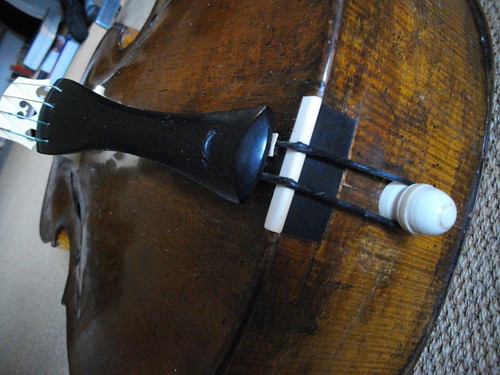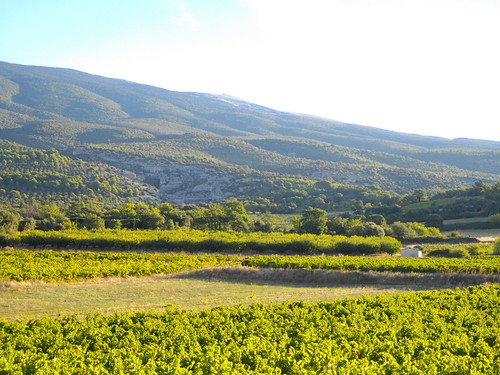The shrinking endpin.

I walk in to the audition hall with my cello. I pull the end pin out as far as it will go, tighten the screw and stick the spike in to the maple wood floor. I hear some rustling in the third row of the stalls. I think briefly about Martin Finn whom I love. I never really know how to start so I just put my bow on the string and pull. The audition ‘accompanist’ catches me up imperceptibly, brilliantly, and we are off, taking a lugubrious route through Schubert’s arpeggione sonata.
To the seventeen year old me, this classical sonata for the six stringed instrument rather like the viola de gamba is simply a page full of yummy cello tunes in which I can show off my new-found chocolaty sound, not to mention my spanking new figure-of-eight bow changes. I play a note and love it until I am satisfied that it is beautiful and atmospheric and full of character, and then I move on (with the help of my Rolls Royce bow change) to the next one. Even though I am a teenager with short spiky hair dyed blue who loves to go wild on the dance floor (particularly to earthy African music), on the cello, neither rhythm, pulse nor meter are an issue. Not even tempo is an issue. Cello playing, as far as I understand it, is all about sound. Gorgeous, sexy sound!
Towards the end of the exposition I am interrupted by the tinkle of a bell, perfectly in tune with the piano, that signals the judges for the award have heard enough. Shame, I think, as I have a very special colour up my sleeve for the development. A sort of gossamer purple. Anyway, I have certainly made some beautiful sounds in the first half and am pretty sure they will hand over the dosh.
‘Why are you playing it at such a slow tempo?’ says the woman with the bobbed haircut, lowering her spectacles and pushing a sheet of paper to the side. ‘And what about the rhythm?’
I sit in silence. I have no answer to the judge’s question.
‘OK, thank you Miss Phillips’ says the judge. ‘Could you tell the next candidate we are ready?’
The first clue I find to the answer to the judge’s question is five years later when I realize that each time I feel anxious before or during a concert, I pull the endpin out just a little longer in the hope I will feel more in control. And then I feel even less connected. It takes me another twenty-five to figure out the rest.
The endpin started out life as a cushion on which to rest a bass instrument and thus relieve the strain on the classical pantalooned knee. In 1830 it morphed in to a wooden peg a few inches long which allowed the Belgian cellist Adrien Servais to rest his cello more comfortably against his body. (On whether this became necessary because of the size of his Stradivarius or his increasing paunch, views differ). Not everyone adopted it, but it did give women the choice to give up side saddle playing, and the Portuguese beauty Guilhermina Suggia (with her flowing scarlet robe as painted by Augustus John) the opportunity, half a century later, to become the girl cellist’s first heroine. The endpin’s heyday surely came when the French cellist Paul Tortelier invented the bent model adopted by Rostropovitch, with the cello jutting out from his chest like a table, so much so that one almost expected to see a napkin tucked into his dress shirt. Nowadays, with so many cellists straddling modern and period styles, playing with the cello cradled between their knees one day and supported by an endpin the next, the long endpin craze seems to have subsided and a mid-length support is back in fashion.
As I see it, there is a musical parallel with this journey from short to long endpin and back to middling. This journey is from the cello playing a fundamentally rhythmic and harmonic (vertical) rôle in the baroque and classical eras, to a melodic (horizontal) one in the romantic era. In other words, the reason that endpin length increased was a direct result of the increase in long melodic lines in the cellist’s, especially the solo cellist’s, repertoire. But what of the ‘modern’ high endpinned cellist playing a Haydn bass line in a symphony, or indeed Schubert’s arpeggione sonata? Is it surprising (not, of course, that everyone was as extreme as that blue-haired cellist) that the era of the high endpin was also the era of baroque and classical repertoire being played so often in a slow, lugubrious manner, lacking a sense of harmonic rhythm or driving pulse? Was everyone struggling like me?
I started playing the baroque and classical cello in the mid nineties, sort of by accident, because it was becoming apparent that if I did not, I would be locked out of the repertoire I loved more and more: Haydn and Mozart symphonies, Bach cantatas, the Passions. Audiences and concert halls, and even film makers (Tous Les Matins du Monde was THE soundtrack at the time) were becoming increasingly interested by and demanding of the gutsy folksy sound that was (re-)emerging, and period instrument groups were on the up. As soon as I was comfortable with cradling the cello with my calfs I found answers. I changed from being a nervous pulseless perfectionist who wouldn’t play anything until I had practiced it for months, to someone ‘bien dans sa peau’ on stage, risk-taking, and as spontaneous as any folk musician. The main reason for this change was a feeling of abandon as my arm swung around round my torso and back.
Think of any folk culture that has stringed instruments - Indian, folk, jazz, gypsy. The violinists all hold their instruments low on the body and angled downwards to get the optimum connection to the arm’s natural swing round the torso and therefore the rhythm and the harmony. I was not far off when I realized that my desire for more control in concerts was making me want to put my endpin higher and higher. What I had yet to realize was that there was something that went hand in hand with control, and that was abandon.








